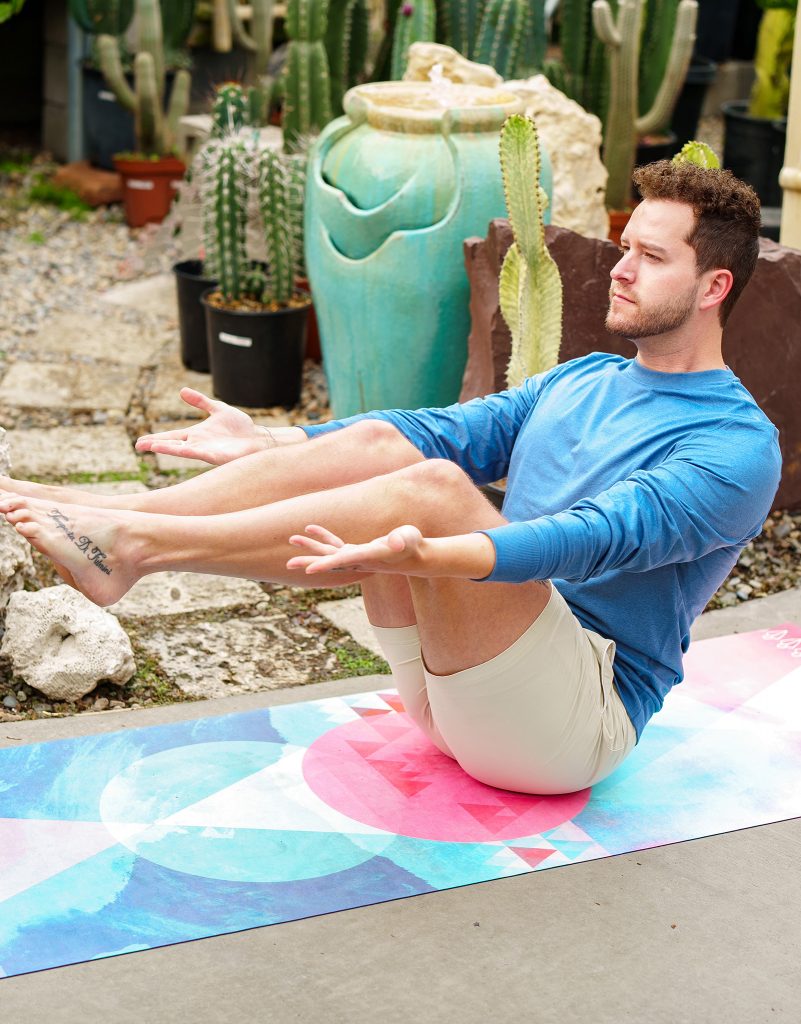Navasana: Modify Your Boat Pose
A strong core is essential to so many aspects of our daily lives. Tending to our core muscles—the abdominals and back muscles—is core (so to speak) to our yoga asana practice. Yoga’s most iconic abdominal strengthener, Boat Pose (Navasana), can be extremely challenging, and often contraindicated for people just starting out in asana practice. For that reason, a modified version of Navasana can be a great way to wade into core strengthening.
Benefits of Core Strengthening
Here are some of the benefits of strengthening your core:
Promotes healthy posture
Improves balance and coordination
Stabilizes the body, so that injuries such as sprains and strains are less likely
Reduces back pain
Promotes deeper breathing
Makes everyday activities such as lifting, rising up from the floor more effortless
When we think of the core, our minds often go right to the abdominals. However, our back muscles are also essential players in core strength. While Navasana is mainly an abdominal-strengthening pose, it also has a secondary benefit of strengthening the back muscles as well. In addition, as a balancing pose, it helps us build our balancing skills.
Why Modify Navasana?
Unlike the photo at the top of this post, the traditional form of Navasana is practiced with straight legs. This version of the pose poses several challenges. First, straightening the legs in Navasana requires stretchy hamstrings. A practitioner with tight hamstrings will invariably have to flex their lumbar spine to an extreme. Second, the extra leverage straight legs exert on the body can cause strain.
The third challenge applies mostly to men. The center of gravity for a female body is lower than it is for a male body. For most women, the center of gravity is in the pelvis; for men it’s in the low back. This means that the leverage straight legs exert on the body will make it really difficult for men to find stability in Navasana, especially if it’s coupled with tight hamstrings.
A couple paragraphs ago, I mentioned lumbar spinal flexion (convex curve) in Navasana. While it’s not healthy to flex the spine to an extreme in Navasana, a little bit of flexion, so that the lumbar spine is straight, is okay. In fact, that small bit of flexion will enable the abdominals to engage a bit more than if we’re trying to maintain our lumbar (concave) curve. In order to maintain a concave curve, we have to balance on the front edges of our ischial tuberosities (aka “sitting bones”). Have you ever tried that? In my experience, it’s not at all conducive to balancing.
How to Practice Navasana
Gather your props: a Yoga Mat is all that’s necessary.
Start in a seated position in the center of your mat.
Bend your knees and place the soles of your feet on your mat.
Place your hands behind you on the floor so that your torso leans back at a diagonal.
With your hands still on the floor, lift your legs. Bend your knees so that your shins are parallel to the floor. Your weight should be in your glutes. Avoid trying to balancing on the forward edge of your ischial tuberosities.
Take a breath or two in this position. This pose can be a helpful prelude to practicing Navasana. It engages the abdominals without producing any back strain.
If you feel ready, lift your arms up and extend them straight forward at shoulder level. Your palms can face your legs, or face up or down, depending on what feels best for you.
Take 3 to 5, or more, deep breaths here.
Then release the pose and rest with your feet on the floor, hands behind you on the floor. Repeat if you like.
Leave a Reply Cancel reply
Recent Comments
Archives
- December 2025
- November 2025
- October 2025
- September 2025
- August 2025
- July 2025
- June 2025
- May 2025
- April 2025
- March 2025
- February 2025
- January 2025
- December 2024
- November 2024
- October 2024
- September 2024
- August 2024
- July 2024
- June 2024
- May 2024
- April 2024
- March 2024
- February 2024
- January 2024
- December 2023
- November 2023
- October 2023
- September 2023
- August 2023
- July 2023
- May 2023
- March 2023
- August 2022
- July 2022
- June 2022
- May 2022
- April 2022
- March 2022
- February 2022
- January 2022
- December 2021
- November 2021
- October 2021
- September 2021
- August 2021
- July 2021
- June 2021
- May 2021
- April 2021
- March 2021
- February 2020
- January 2020
Theme by The WP Club . Proudly powered by WordPress
